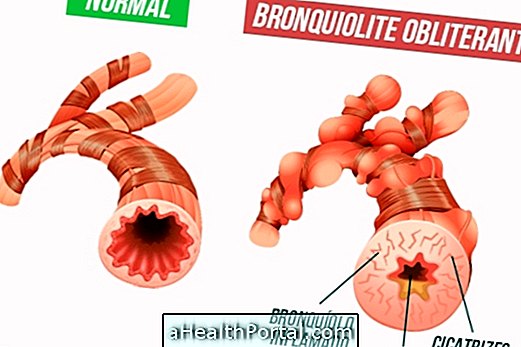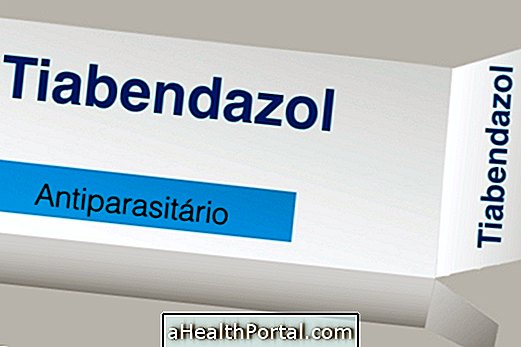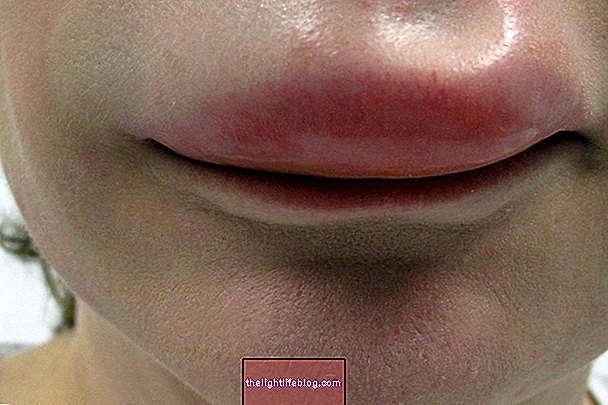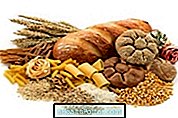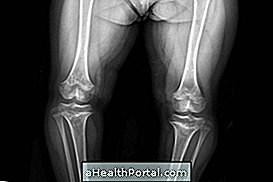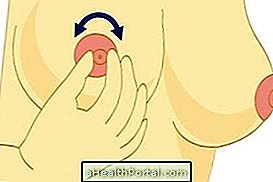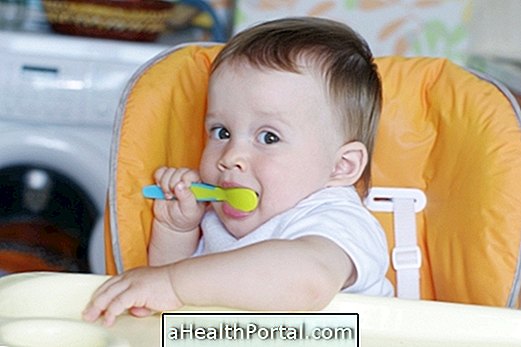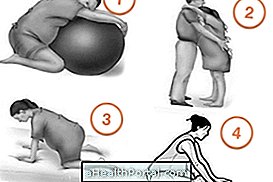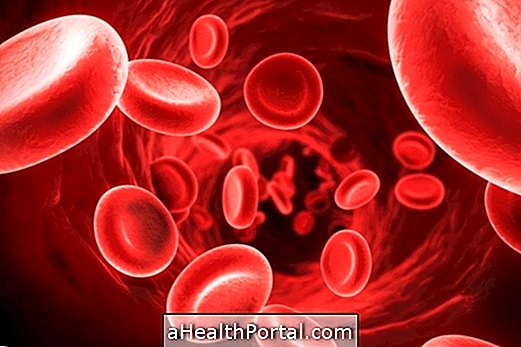Changes in milk, intestinal infections or problems in the baby's stomach can cause changes in the stool, and it is important for parents to be aware of the characteristics of the baby's poop as it may indicate changes in the child's health status.
Therefore, it is important to consult your pediatrician whenever there are sudden changes in the stool, especially when accompanied by other symptoms such as decreased appetite, vomiting or irritability, so that the baby is evaluated and start the appropriate treatment soon.

1. Stool color
Changes in baby's stool color are related to the speed that food passes through the gut, type of food, or health problems, as shown below:
Yellow
The yellowish color is normal in the poop of babies, especially those who are fed only with breast milk. When fed with milk formula, the feces are dark yellow, more brown-colored. Thus, yellow poop should only be source of concern when in the form of diarrhea.
Greens
The green color appears in the baby's stool especially in the first week of life or when it is exclusively breastfed, then having a light green color. However, this color may also be due to the presence of infection, change of milk, intolerance to some food or use of medicines. See more in: What can be the green baby poop.
In addition, if the poop is greenish shiny and textured foam, it may be a sign that the baby is feeding only on the beginning of breastfeeding, which is composed especially of water.
What to do: If they develop after the second week of life or if the green tone gets stronger, you should see your pediatrician to identify the cause of the problem. If the stool is dry and frothy, you should let the baby dry the entire breast before changing your breast, because only then will it be able to ingest the milk fat and the calories needed to grow healthy.
White
They may indicate poor digestion problems due to lack of bile, a liver-produced liquid that helps digest diet fats and is responsible for the dark color of the stool.
What to do: If this color persists for more than 2 or 3 days, you should see your pediatrician because the baby may have a liver problem and end up losing weight due to poor digestion.
Reds
They can occur due to increased intake of foods such as beets, beans or blackberries. However, red stools can also be a sign of blood in the intestinal tract, which can be caused by problems such as intestinal infection, constipation, hemorrhoids or food allergy, and it is necessary to seek the pediatrician soon. See other causes here.
What to do: If red is not due to increased intake of dark foods, you should see your doctor right away to identify the presence and cause of intestinal bleeding.
Dark brown
It can be a sign of blood due to lesions in the intestinal tract or due to the presence of wounds in the mother's breasts, which can end up causing the baby to ingest blood.
In addition, the dark brown color may also be a sign that the baby is taking dietary supplements like iron, which end up darkening the stool.
What to do: If supplements are used, change in color is normal and you should only see if your stools get better after you stop taking the medication. However, the dark color has no apparent cause, it is important to seek the pediatrician soon to try to identify the problem.
Thus, the important thing to remember is to be aware of changes in the baby's stool and their intestinal transit rhythm, because sudden changes or accompanied by other symptoms, such as fever, pain, swelling and irritation, may indicate the presence of diseases.
2. Number of feces
The amount of baby's stool varies depending on the type of food and age, with bowel movements after meals or up to 2 times a week.
In general, newborns fed exclusively breastmilk usually poop after each feeding, but this frequency decreases after about 3 to 6 weeks because of the maturity of the mother's milk.
However, care should be taken to see the pediatrician in case the stool drops suddenly, without any apparent reason or changes in the child's diet, as it may be indicative of a problem.
3. Consistency of feces
The normal consistency of the baby's stool is pasty, but it is common for infants fed powdered milk to have more consistent stools or small lumps, as the milk formula is harder to digest than breast milk.
However, abrupt changes in consistency may indicate health problems such as:
Constipation
The stools are smaller and have the form of small hard balls, and may also appear pain, stiffening of the belly and cracks in the anus, due to the difficulty in defecating.
Constipation may indicate dehydration, change in milk tolerance, or increased consumption of hard-to-digest foods such as seeds, beans, and corn.
What to do: Offer more water to the baby and see if consistency improves. In addition, if your child already eats solid foods, you should try to offer more cooked fruits and vegetables to increase the amount of fiber in your food. However, if constipation persists for more than 3 days, you should seek your pediatrician. See other signs in: Signs of dehydration in children.
Diarrhea
It is characterized by the occurrence of at least 3 stools more liquid than normal, and may indicate problems such as virus infection or allergy to milk or some food.
What to do: Provide plenty of water to the baby to avoid dehydration and give easily digestible foods if the baby already has solids such as cornstarch, chicken or cooked rice. It is also important to seek the doctor to assess the cause of the diarrhea, especially if there is also fever or vomiting or if the baby is less than 3 months old. See more in: How to treat diarrhea in the baby.




